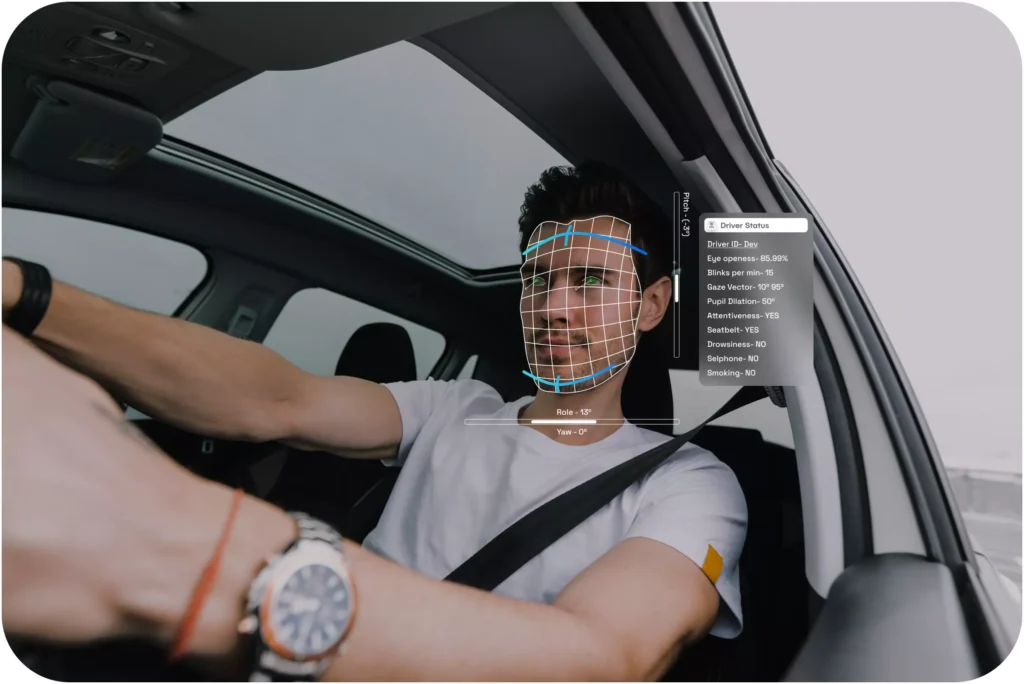Picture this: every year, thousands of lives are lost due to road accidents. The harrowing reality is that many of these tragedies could have been prevented. But what if there was a revolutionary technology that could help reduce road deaths significantly? Enter AI-powered driver monitoring systems – the game-changer in enhancing road safety and saving lives. Let’s delve into how this cutting-edge technology is reshaping the way we approach driver safety on the roads.
Explanation of how AI-powered driver monitoring systems work
Have you ever wondered how AI-powered driver monitoring systems actually work to enhance road safety? Let’s dive into the technology behind these innovative systems.
Using advanced artificial intelligence algorithms, these systems analyze various data points in real-time. From detecting driver drowsiness and distractions to monitoring erratic driving behavior, AI can quickly assess potential risks on the road.
By utilizing sophisticated sensors like cameras and infrared technology, these systems capture critical information about the driver’s actions and surroundings. This data is then processed through machine learning models that can identify patterns indicative of unsafe driving practices.
Through continuous monitoring and analysis, AI-powered systems provide immediate alerts to drivers and fleet managers when risky behaviors are detected. By offering proactive intervention measures, such as audio warnings or notifications, these technologies help prevent accidents before they occur.
The seamless integration of AI into driver monitoring systems marks a significant leap forward in improving road safety standards worldwide.
Benefits of using AI-powered driver monitoring systems
AI-powered driver monitoring systems offer a range of benefits that are crucial in enhancing road safety. By utilizing advanced AI technology, these systems can analyze various factors such as driver behavior, drowsiness levels, and distractions to provide real-time alerts and warnings. This proactive approach helps prevent accidents before they occur.
Another advantage is the ability of AI-powered systems to detect signs of impairment or fatigue in drivers. With features like facial recognition and eye tracking, these systems can accurately assess the driver’s condition and intervene when necessary. This ensures that only alert and focused individuals are behind the wheel.
Moreover, these systems provide valuable data insights for fleet managers and insurance companies to improve overall safety standards. By identifying patterns and trends in driving behavior, organizations can implement targeted training programs or interventions to address specific issues effectively.
The integration of AI-powered driver monitoring systems represents a significant step towards reducing road deaths by promoting safer driving habits among motorists.
Case studies of successful implementation of these systems in reducing road deaths
Imagine a bustling city where road safety is a top priority. One case study showcased how AI-powered driver monitoring systems were implemented in public transportation fleets. By analyzing real-time data, the system detected drowsiness and distraction among drivers, prompting immediate alerts.
In another instance, a logistics company integrated these systems into their trucks to monitor driver behavior. This proactive approach led to a significant decrease in accidents caused by reckless driving habits such as speeding or sudden lane changes.
Furthermore, an insurance company utilized AI technology to offer discounts to policyholders who installed driver monitoring systems in their vehicles. The results? A noticeable reduction in claims due to improved driving behavior recorded by the AI algorithms.
These success stories highlight the tangible impact of AI-powered driver monitoring systems on reducing road deaths and enhancing overall road safety.
Challenges and limitations of using AI-powered driver monitoring systems
Implementing AI-powered driver monitoring systems comes with its own set of challenges and limitations. One major challenge is ensuring the accuracy and reliability of the AI algorithms in detecting driver behavior accurately in real-time. Factors such as environmental conditions and different driving styles can sometimes pose difficulties for these systems to interpret data correctly.
Another limitation is privacy concerns surrounding the collection and storage of personal data by these monitoring systems. Users may be wary of having their driving habits constantly monitored, raising questions about data security and how this information will be used or shared.
Furthermore, there are technical limitations to consider, such as potential system errors or malfunctions that could impact the effectiveness of these AI-powered solutions. Ensuring regular maintenance and updates are crucial to address any issues that may arise.
Despite these challenges and limitations, continuous advancements in AI technology offer promising solutions to enhance road safety measures through improved driver monitoring systems.
The future of road safety with the use of AI technology
As technology continues to advance, the future of road safety looks promising with the integration of AI-powered systems. These sophisticated technologies have the potential to revolutionize how we prevent accidents on the road. By utilizing real-time data and analytics, AI can detect driver fatigue, distraction, and other risky behaviors before they lead to disasters.
Imagine a world where cars are equipped with intelligent sensors that can anticipate potential collisions and warn drivers in time to take evasive action. This proactive approach could significantly reduce the number of accidents caused by human error. Additionally, AI-powered systems can provide valuable insights for improving infrastructure design and traffic management strategies.
The evolution of AI in road safety is not just about preventing accidents but also enhancing overall transportation efficiency. With predictive algorithms and smart monitoring tools, traffic flow can be optimized, leading to smoother journeys and reduced congestion. As we look ahead, embracing these technological advancements will undoubtedly play a vital role in creating safer roads for all users.
Importance of investing in this technology to save lives on the road
Investing in AI-powered driver monitoring systems is crucial for saving lives on the road. These advanced technologies offer real-time insights into driver behaviour, alerting them and authorities of potential risks or distractions. By implementing these systems, we take a proactive approach to enhance road safety and reduce accidents caused by human error. As technology continues to evolve, embracing AI in vehicles can pave the way for a safer and more secure driving experience for everyone on the road.
For further info, visit FutureBeeAI
For more, visit QAwire

